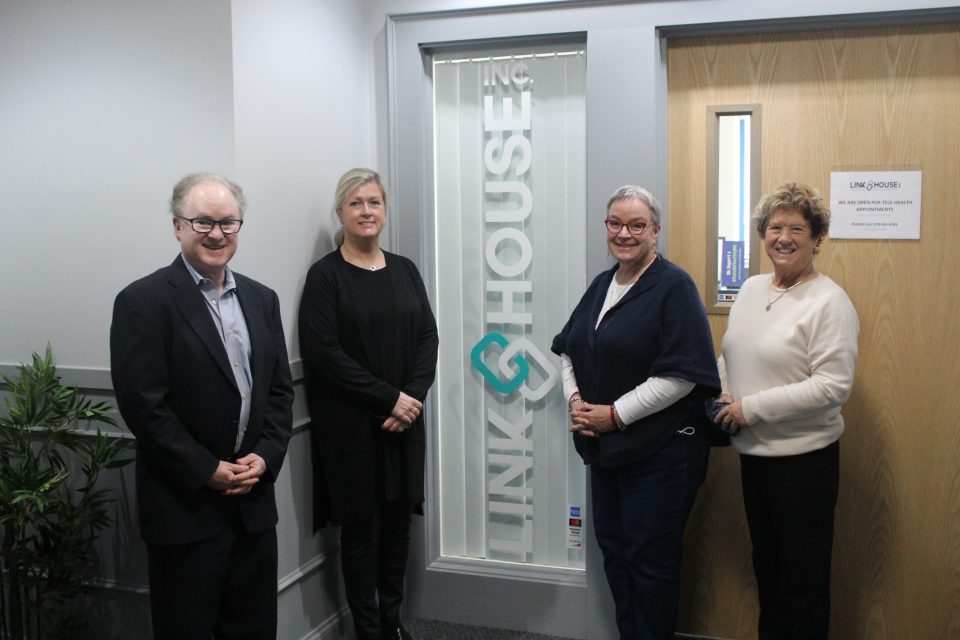REGIONAL – When Dr. Gary Gastman suggested to his Link House board that the addiction recovery and treatment organization should open its first out-patient facility, he projected that the Amesbury Center for Behavioral Health and Addiction Treatment Services would treat about 150 clients in the first year of operation.
That was a few months in late 2019 before the Covid-19 Pandemic hit. At the beginning of 2021, the center (CBHATS) has treated three times the number of patients and is adding more therapists and another recovery coach who is accessible to clients who feel they need some help not to pick up a bottle.
“It was a logical step forward,” Gastman said last week, as he looked back on the decision to open the sixth Link House treatment facility. “We were in the right position to help.”
The Pandemic has been hard on those prone to drink too much or pop pills. During the last year, people had to stop going to in-person AA meetings. Remote meetings may be good for business, government and talking with grandparents, but they are not as effective for staying sober as is being there. “They miss their friends,” said Christine Turner, the Link House Senior Director of Services.
“Substance use disorders have reached epidemic levels in Massachusetts, specifically right here in our neighborhood,” Gastman wrote in the current annual report. “We are often at capacity with waiting lists and are looking for ways to increase our footprint to service the growing demand.”
The proliferation of fentanyl-laced heroin has made the addition challenge far more severe, Gastman said.
Despite the limitations of remote AA meetings. Turner started a Wednesday drop in where about a dozen women gather on weekly on what Turner jokes looks like the old “Hollywood Squares” television show to work on keeping themselves together.
The CBHATS is also working with the Amesbury Council on Aging to provide coaching for the elderly who are even more isolated during the Pandemic than normal.
“Addiction is a disease of isolation. The Pandemic has been challenging,” Turner said. “Link House is a safety net.”
The stress of working from home or not being employed has driven many to drink or take pills. But Turner worries that the return to work once the vaccines protect more people will be just as stressful.
There is no reliable sales data on opioids, but the Pandemic has clearly been good for liquor sales. According to Nielsen’s market data, total alcohol sales outside of bars and restaurants have surged roughly 24 percent during the pandemic. The sales of spirits with higher alcohol content rose even faster, a more than 27 percent increase over last year.
Quarantine cocktail parties became an in-thing. States like Massachusetts left liquor stores open as essential businesses like gas stations, pharmacies and grocery stores, while it closed others. Some states allowed bars to make home deliveries or sell liquor off premises.
“I get worried when people think about alcohol as a tool to unwind, a tool to cope with stress and anxiety,” Dr. Lorenzo Leggio, a researcher with the National Institute on Alcohol Abuse and Alcoholism, told National Public Radio.
Link House, which serves clients from all walks of life, will soon celebrate its 50th year helping people recover from addictions. It has served more than 6,000 people in North Shore communities.
The John Ashford Link House was founded in 1972 by a group of North Shore residents to help men at a time when many Vietnam veterans had come home struggling with addictions. Link House was only the fourth licensed residential treatment program in the state.
It offers treatment in 125 beds in the Elms and Progress houses in Amesbury, the Maris Center for Women in Salisbury and most recently the Women’s Independent Sober Housing (WISH) in Newburyport. The budget has grown in recent years from $1.3 million to $2.4 million, Gastman said.
The majority of funding, more than 60 percent in 2019, came from state contracts. Client treatment fees amounted to 27 percent. Another 8 percent came from earned income. And 2 percent from donations.
With the help of the 12-member board, Gastman is hopeful that the Link House can increase its private donations in the next few years. Last year, the organization benefitted from two anonymous donors who backed a matching campaign that attracted support from 91 donors, in its Links of Hope challenge, raising a total of $96,000.
To support the Link House, Inc., visit www.linkhouse.org.
by Stewart Lytle




